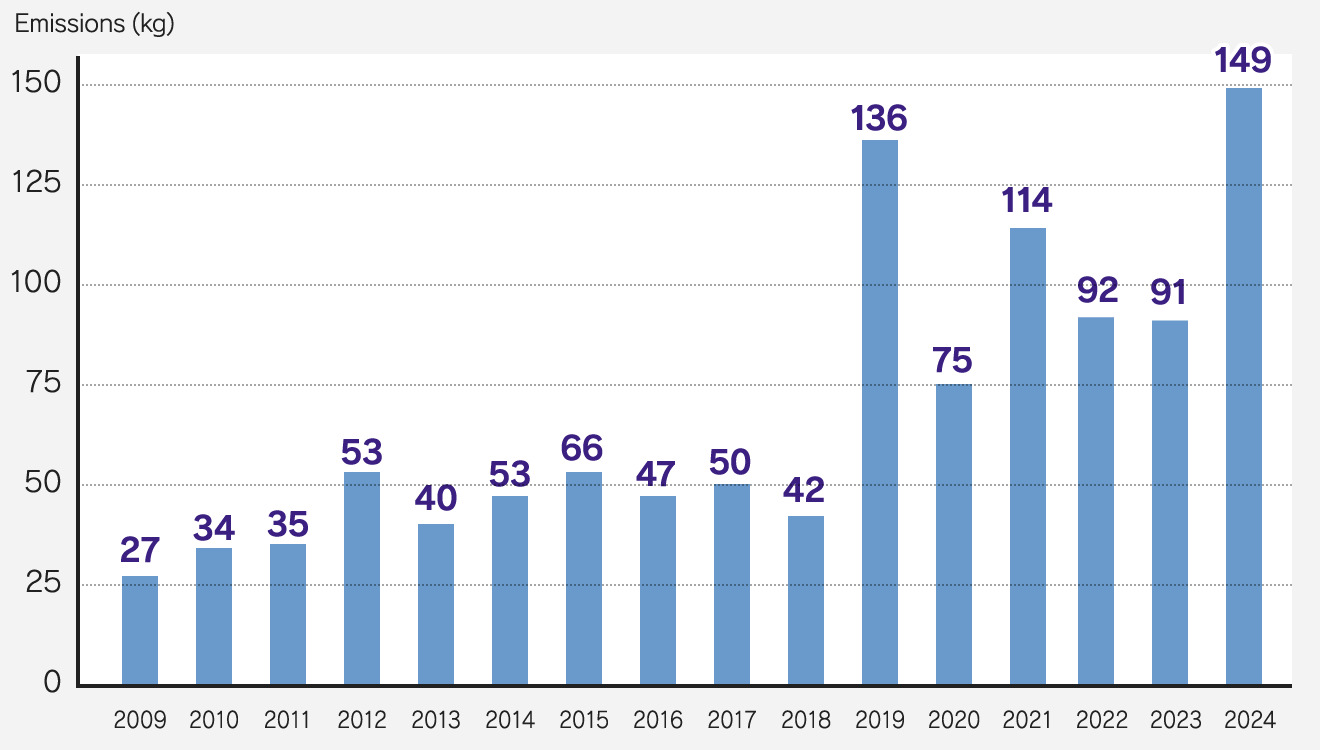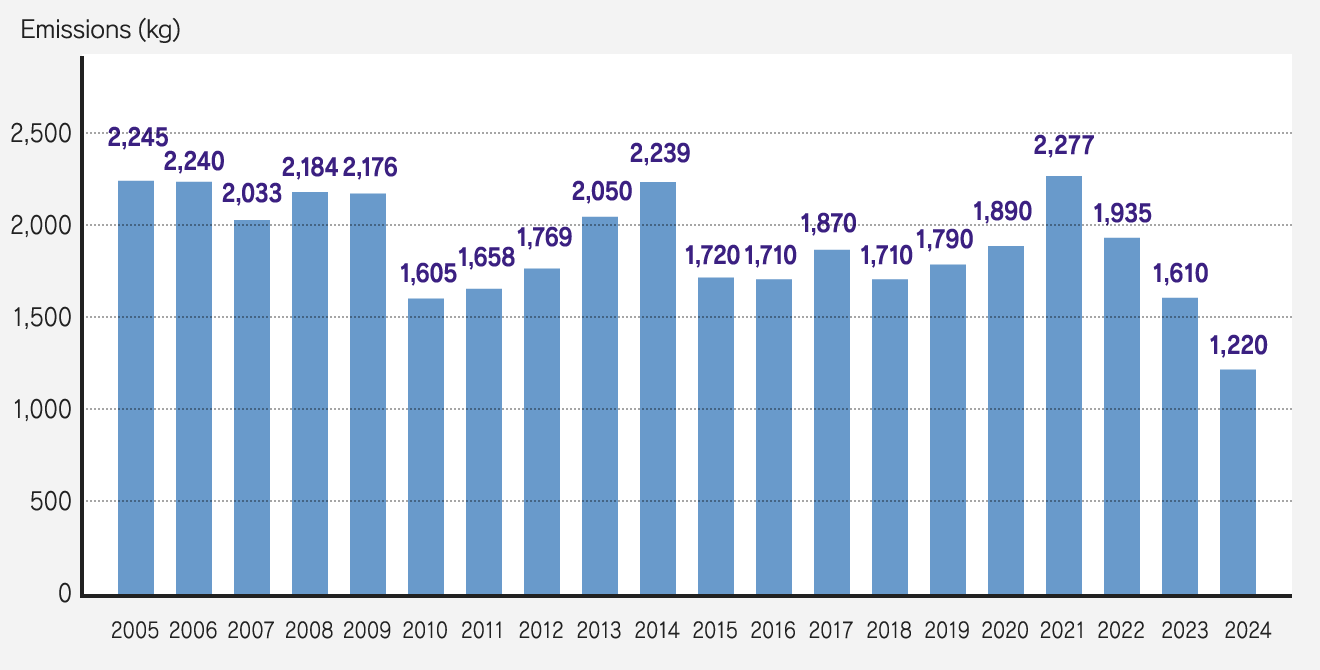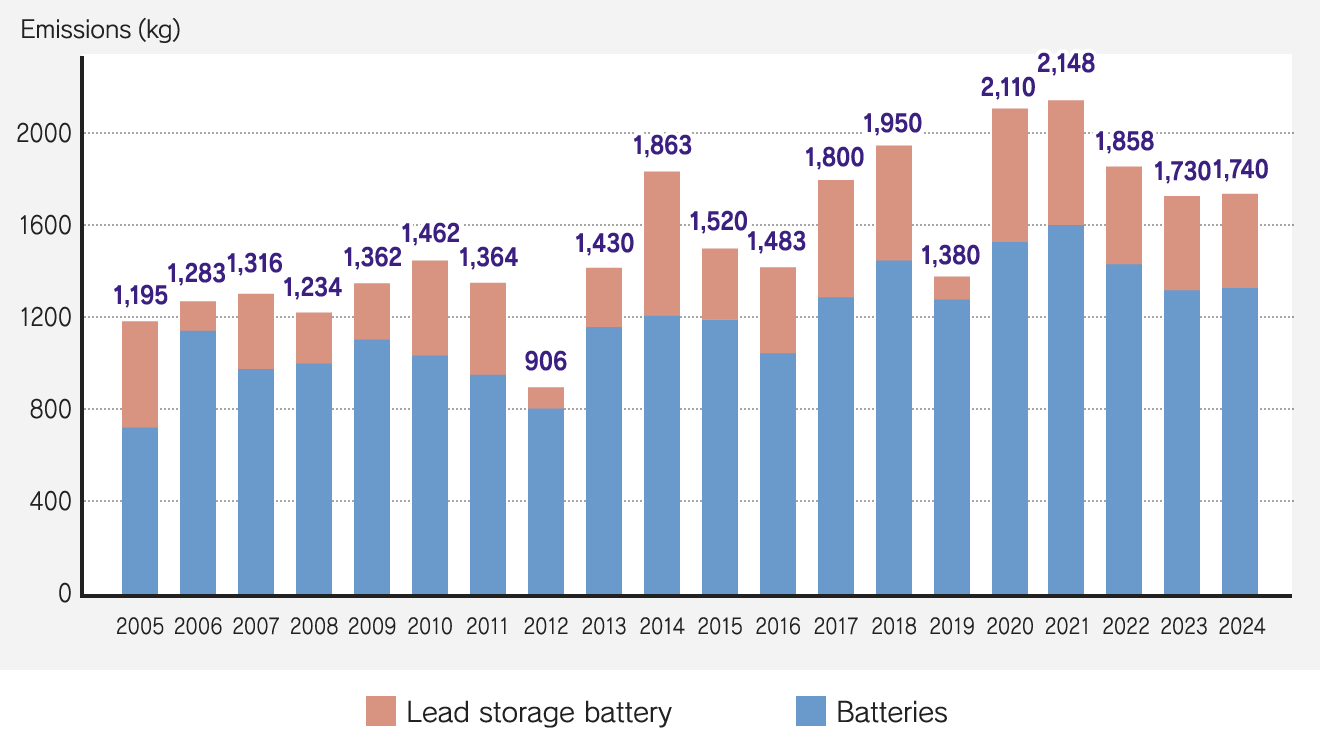3R Waste
Activities (Living)
Collection of household hazardous materials
household hazardous material
Empty spray cans and lighters can be disposed of as business-related general waste. However, if the spray cans and lighters are not completely emptied before disposal, the residual liquids they contain may ignite in a garbage truck. For this reason, the Environmental Safety Center collects used spray cans and lighters as household hazardous waste and outsources their disposal to an external specialist once a year.
Collection status of household hazardous materials

Collection of waste batteries
Waste fluorescent tubes
Fluorescent tubes utilize mercury vapor to emit light, and it is environmentally unsound to discharge them as business-related general waste. Accordingly, the Environmental Safety Center collects expended fluorescent tubes once a year as waste fluorescent tubes and outsources their disposal to an external specialist.
Status of collection of waste fluorescent tubes

Collection of waste batteries
Waste batteries
There are many different types of batteries. Commonly used manganese and alkaline batteries contain zinc, manganese dioxide, and iron. Button batteries contain a small amount of silver, while nickel-cadmium and lithium batteries contain nickel, cobalt, and lead – and lead is a particularly harmful substance. Lead-acid batteries also contain toxic sulfuric acid. For this reason, the Environment and Safety Center collects waste batteries for disposal and lead-acid batteries in batches. Their removal is outsourced to an external specialist once a year.
Collection status of waste batteries














